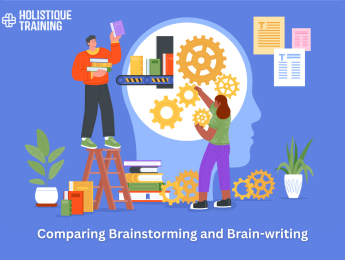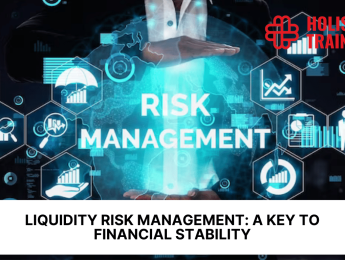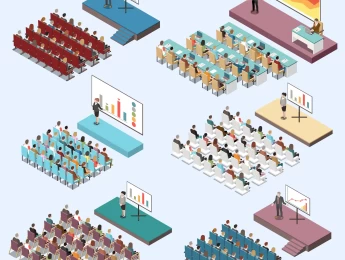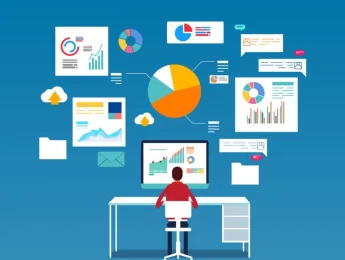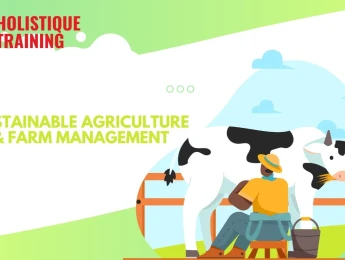- Table of Contents
- Introduction
- What Is Brainstorming?
- The Principles of Effective Brainstorming
- 1. Defer Judgement
- 2. Quantity Over Quality
- 3. Build on Others' Ideas
- 4. Encourage Wild Ideas
- 5. Be Time-Conscious
- 7 Popular Brainstorming Techniques and Methods
- 1. Classic Brainstorming
- 2. Mind Mapping
- 3. Reverse Brainstorming
- 4. Round-Robin Brainstorming
- 5. SWOT Analysis
- 6. Nominal Group Technique (NGT)
- 7. Six Thinking Hats
- Pros and Cons of Brainstorming
- Pros:
- Cons:
- What Is Brain-writing?
- Key Differences Between Brainstorming and Brain-writing
- The 9 Steps of Brain-writing
- 1. Clarify the Problem
- 2. Silent Idea Generation
- 3. Idea Rotation
- 4. Silent Review
- 5. Rotation Continues
- 6. Consolidation
- 7. Open Discussion
- 8. Evaluation
- 9. Action Planning
- Pros of Brain-writing
- Equal Participation
- Reduced Social Pressure
- Diverse Perspectives
- Thoughtful Reflection
- Minimised Groupthink
- Flexibility in Interaction Styles
- Brainstorming vs. Brain-writing: Which One Is Better for Your Team?
- Consider Brainstorming When:
- Consider Brain-writing When:
- Conclusion
Introduction
Creativity is the lifeblood of innovation, and in the collaborative landscape of modern work, brainstorming has become a cornerstone for generating fresh ideas and solutions. However, as teams grapple with the nuances of effective idea generation, a newer contender is emerging on the scene: brain-writing. In this exploration, we'll delve into the depths of brainstorming and brain-writing, examining their principles, techniques, pros, and cons to help you discern which method might best suit your team's needs.
What Is Brainstorming?
Brainstorming is a dynamic group activity designed to foster the generation of creative ideas and solutions. Conceived by advertising executive Alex Osborn in the 1940s, the process aims to leverage the collective intelligence of a team to address challenges, spark innovation, and encourage out-of-the-box thinking.
The Principles of Effective Brainstorming
1. Defer Judgement
The principle of deferring judgement lies at the core of effective brainstorming. It encourages participants to set aside their critical faculties temporarily, creating a space where ideas, no matter how unconventional, can flourish without immediate evaluation. In this zone of suspended judgement, the goal is to cultivate an atmosphere where every idea is a potential stepping stone to innovation. By deferring judgement, teams can explore the breadth of their collective creativity without prematurely dismissing novel concepts.
2. Quantity Over Quality
In the realm of brainstorming, the mantra "quantity over quality" serves as a guiding principle. The emphasis here is not on refining ideas in real-time but on generating a vast pool of possibilities. The belief is that within the multitude of ideas lie the seeds of innovation. The pursuit of quantity encourages participants to think expansively, pushing the boundaries of conventional thinking and potentially unearthing groundbreaking solutions.
3. Build on Others' Ideas
Collaboration is the heartbeat of effective brainstorming. Building on others' ideas transforms the process from an individual endeavour into a symphony of collective creativity. This principle encourages participants to view their contributions as building blocks, each one an essential note in the harmonious composition of ideas. By weaving together individual threads, teams can create a tapestry of innovation that transcends the limitations of isolated thinking. In fact,studies indicate that effective workplace collaboration enhances innovation by 30%.
4. Encourage Wild Ideas
In the pursuit of innovation, there's immense value in embracing the wild and unconventional. Encouraging wild ideas fosters an environment where participants feel liberated from the constraints of practicality. These seemingly outlandish concepts can act as catalysts, sparking unforeseen connections and paving the way for truly original solutions. By opening the door to the unexpected, teams can tap into reservoirs of creativity that lie beyond the boundaries of conventional thinking.
5. Be Time-Conscious
Time constraints are not merely practical considerations; they are integral to the creative process. Setting a time limit for brainstorming sessions injects a sense of urgency, nudging participants to think on their feet and contribute ideas rapidly. This principle acknowledges the fleeting nature of inspiration and harnesses the pressure of time to stimulate spontaneous, unfiltered idea generation. It transforms brainstorming into a dynamic, focused endeavour where the pursuit of creative excellence aligns with the ticking of the clock.
In embodying these principles, effective brainstorming becomes more than a structured process—it becomes a philosophy that guides teams through the labyrinth of creativity. By deferring judgement, prioritising quantity, building collaboratively, embracing the wild, and respecting the constraints of time, teams can unlock the full spectrum of their creative potential and navigate the intricate landscape of problem-solving and innovation.
7 Popular Brainstorming Techniques and Methods
1. Classic Brainstorming
Classic brainstorming is the quintessential method that comes to mind when envisioning collaborative idea generation. In a group setting, participants openly share their thoughts and ideas on a specific topic. Facilitated by an appointed leader, often referred to as the "brainstorming facilitator," the session aims to harness the collective intelligence of the team. This approach not only fosters a dynamic exchange of ideas but also cultivates a sense of shared ownership among participants. The key lies in the immediacy of idea sharing, as thoughts are expressed in real-time, creating an atmosphere of spontaneity and unfiltered creativity.
2. Mind Mapping
Mind mapping is a visual brainstorming technique that transcends linear thinking. Participants create a graphical representation of ideas, with a central concept branching out into interconnected subtopics. This method allows for the exploration of relationships and associations between concepts, providing a dynamic visual framework for idea generation. The organic and non-linear nature of mind mapping mirrors the way thoughts naturally flow, making it a powerful tool for those who thrive on visual thinking and holistic connections.
3. Reverse Brainstorming
Reverse brainstorming flips the traditional approach on its head by focusing on identifying problems rather than solutions. In this method, participants brainstorm potential causes or exacerbating factors of a problem, offering a unique perspective that can lead to innovative solutions. By first understanding the negative aspects, teams can reverse engineer their way to positive outcomes. Reverse brainstorming encourages participants to think critically about challenges, providing a solid foundation for problem-solving and solution development.
4. Round-Robin Brainstorming
Addressing the challenge of equal participation, round-robin brainstorming introduces a structured format to the idea generation process. Participants contribute ideas in a predetermined order, ensuring that each team member has an opportunity to share their thoughts. This method prevents dominant voices from overshadowing others and encourages quieter members to contribute without the pressure of competing for airtime. Round-robin brainstorming promotes an inclusive environment, where every voice is acknowledged and valued.
5. SWOT Analysis
SWOT analysis, a widely used strategic planning tool, extends its utility to the realm of brainstorming. Standing for Strengths, Weaknesses, Opportunities, and Threats, SWOT analysis evaluates these four aspects in the context of a specific challenge or objective. This structured approach encourages teams to consider both internal and external factors that may impact their ideas. By providing a comprehensive view of the landscape, SWOT analysis guides brainstorming sessions with a strategic focus, enhancing the quality and relevance of generated ideas.
6. Nominal Group Technique (NGT)
Recognising the value of independent thought, Nominal Group Technique (NGT) introduces a silent phase to the brainstorming process. Participants begin by silently generating ideas before sharing them with the group. This method minimises social pressure, allowing individuals to contribute their thoughts without external influences. After the silent phase, ideas are presented, and the group collectively builds upon them. NGT strikes a balance between individual reflection and collaborative ideation, offering a structured approach to ensure all perspectives are considered.
7. Six Thinking Hats
Six Thinking Hats, developed by Edward de Bono, introduces a unique approach to brainstorming by assigning participants different "hats," each representing a specific perspective or thinking style. These hats include roles such as the Blue Hat for process control, White Hat for facts and information, Red Hat for emotions and intuition, Yellow Hat for positive thinking, Black Hat for critical judgement, and Green Hat for creative ideas. By systematically exploring ideas from various angles, this method promotes comprehensive thinking, prevents premature judgement, and ensures a well-rounded consideration of possibilities.
Each of these brainstorming techniques brings a distinct flavour to the creative process, catering to diverse thinking styles and team dynamics. The key is to choose the method that aligns with your team's objectives, leveraging the strengths of each technique to navigate the vast landscape of idea generation successfully.
Pros and Cons of Brainstorming
Pros:
Enhanced Creativity
One of the most significant advantages of brainstorming is its ability to enhance creativity. By creating an environment that encourages the free flow of ideas, brainstorming taps into the collective imagination of the team. The diversity of perspectives and experiences within the group often leads to the generation of novel and innovative solutions. Through this collaborative crucible, creativity flourishes, and teams can uncover unexplored avenues of thought that might not emerge in a more structured setting.
Team Building
Brainstorming sessions serve as a catalyst for team building. As participants engage in open and uninhibited idea sharing, a sense of camaraderie and shared purpose naturally develops. Collaborative problem-solving fosters better communication and understanding among team members, breaking down silos and strengthening the overall cohesion of the group. The social bonds formed during brainstorming can extend beyond the session, creating a more collaborative and supportive work environment.
Rapid Idea Generation
In time-sensitive scenarios, brainstorming excels at rapid idea generation. The spontaneous nature of the process, combined with the collective input of team members, allows for the quick exploration of numerous ideas. This speed is invaluable when facing complex challenges that require immediate attention. The ability to generate a high volume of ideas in a short period often leads to the discovery of unexpected, game-changing solutions.
Cons:
Dominance of Voices
One notable drawback of traditional brainstorming is the potential for dominant voices to overshadow quieter team members. Strong personalities or hierarchical dynamics within the group can lead to certain individuals monopolising the conversation. This imbalance in participation can stifle creativity by inhibiting the contribution of unique perspectives. To mitigate this, facilitators must actively encourage the inclusion of all team members, ensuring that every voice has an opportunity to be heard.
Groupthink
The desire for consensus, while fostering harmony, can inadvertently lead to groupthink—a phenomenon where the pursuit of agreement overrides critical thinking. In a bid to align with the majority, team members may hesitate to propose unconventional or controversial ideas. This conformity can hinder the exploration of truly innovative solutions and result in a collection of ideas that are safe but lack transformative potential. In fact,studies indicate that innovation often stagnates in consensus-based problem-solving groups; or in other words, groupthink. Overcoming groupthink requires a conscious effort to embrace diversity of thought and encourage the expression of dissenting opinions.
Evaluation Challenges
Immediate critique during the brainstorming phase can pose a challenge. While evaluation is crucial for refining and selecting the best ideas, premature judgement may discourage participants from sharing potentially valuable concepts. Striking the right balance between the free-flowing nature of idea generation and the need for eventual evaluation is essential. Facilitators must establish clear guidelines for when feedback and evaluation are appropriate, ensuring that the creative energy of the brainstorming session is not prematurely stifled.
In navigating the landscape of brainstorming, teams must be cognizant of these pros and cons. By leveraging the strengths of the process—enhanced creativity, team building, and rapid idea generation—while addressing its potential pitfalls—dominance of voices, groupthink, and evaluation challenges—teams can harness the full potential of brainstorming as a powerful tool for innovation and problem-solving.
What Is Brain-writing?
As teams seek more structured and inclusive alternatives to traditional brainstorming, brain-writing emerges as a compelling method. Rooted in the same principles of idea generation, brain-writing takes a different approach, leveraging written communication over verbal exchanges.
Brain-writing introduces a level of thoughtfulness and depth to the ideation process. Unlike the spontaneous nature of verbal brainstorming, participants in brain-writing engage in a silent phase where ideas are independently generated in writing. This deliberate solitude allows team members to explore their thoughts without the immediate influence of others. By providing a space for introspection, brain-writing caters to those who may feel overwhelmed in the dynamics of a vocal group setting or those who find their creativity flourishes in moments of quiet reflection. This silent phase also reduces the fear of judgement, empowering individuals to express ideas that may be unconventional or still in the process of refinement.
Moreover, brain-writing incorporates a structured idea rotation process. Each participant's contributions are shared with others, creating a dynamic exchange of ideas. This method ensures that each team member's perspective is considered, fostering a more comprehensive exploration of the topic. The iterative process of adding insights to existing ideas as documents circulate provides a rich tapestry of thoughts, capturing the diversity of perspectives within the team. Brain-writing, therefore, not only encourages equal participation but also facilitates the cross-pollination of ideas, resulting in a collaborative output that reflects the collective intelligence of the group.
Key Differences Between Brainstorming and Brain-writing
In comparing brainstorming and brain-writing, the primary distinctions lie in their communication dynamics and the nature of idea generation. While brainstorming relies on real-time verbal exchanges within a group setting, brain-writing adopts a written communication approach, allowing participants to generate and reflect on ideas independently. This shift in communication medium contributes to a more thoughtful and introspective ideation process in brain-writing.
Another key difference is the level of real-time interaction. Brainstorming thrives on spontaneous exchanges, promoting immediate sharing and building on each other's ideas within the group. In contrast, brain-writing introduces a silent phase for individual idea generation, creating a sequential exchange as ideas circulate among team members.
Equal participation is a notable challenge in traditional brainstorming sessions, where dominant voices may overshadow quieter contributors. Brain-writing addresses this by ensuring each team member has an equal opportunity to contribute, minimising the impact of assertive personalities.
Moreover, the two methods differ in their approach to social pressure. Brainstorming, occurring in a group dynamic, can create an environment where participants may feel judged or conform to majority opinions. In contrast, brain-writing reduces social pressure as ideas are generated independently, allowing for more candid expression of unconventional thoughts.
The collaboration dynamics in brainstorming involve spontaneous and dynamic building on ideas in real-time. Conversely, brain-writing introduces a structured idea rotation process, promoting a more sequential and nuanced collaboration as ideas evolve through multiple iterations.
Lastly, these methods cater to different interaction styles. While brainstorming may suit extroverted individuals who thrive in dynamic group settings, brain-writing accommodates various styles, including those of introverted team members who prefer a more contemplative environment. These differences highlight the diverse strengths and applications of each method in the creative process.
The 9 Steps of Brain-writing
Brain-writing, as a structured and reflective alternative to traditional brainstorming, unfolds in a series of steps that guide teams through the intricacies of idea generation. This method places a premium on equal participation, thoughtful contribution, and collaborative evolution of ideas. Here are the steps of effective brain-writing:
1. Clarify the Problem
The journey begins with a clear understanding of the problem or challenge at hand. This initial step ensures that the team is aligned in its focus and provides a well-defined context for the subsequent ideation process. By articulating the problem statement, teams lay the groundwork for a collective exploration of solutions.
2. Silent Idea Generation
In this silent phase, participants embark on a solitary journey of idea generation. Armed with pen and paper or digital tools, each team member independently formulates their thoughts and ideas related to the identified problem. The absence of verbal communication allows for uninterrupted introspection, giving individuals the freedom to express their ideas without external influences.
3. Idea Rotation
Building on the principle of collaborative input, the next step involves the rotation of ideas. Each participant's set of ideas is passed on to another team member. This rotation process injects diversity into the ideation pool, exposing each participant to a variety of perspectives and insights.
4. Silent Review
Upon receiving a new set of ideas, team members engage in a silent review. This step encourages thoughtful consideration of the ideas presented, fostering a dynamic exchange of insights and potential refinements. The silent review ensures that each participant contributes not only their original thoughts but also builds upon the ideas shared by others.
5. Rotation Continues
The iterative process of idea rotation and silent review continues, creating a dynamic cycle of collaborative evolution. As ideas circulate among team members, they undergo refinement and expansion, capturing the essence of collective intelligence. This iterative approach allows for a nuanced exploration of the problem space, gradually honing in on the most promising solutions.
6. Consolidation
Following multiple rotations, the team consolidates all the generated ideas. This phase involves compiling the diverse perspectives, insights, and enhancements contributed by each team member. The consolidation process sets the stage for the upcoming group discussion, ensuring that all ideas are considered and none are overlooked.
7. Open Discussion
With a wealth of ideas now on the table, the team transitions to an open discussion. Participants share the insights and perspectives they've gained through the brain-writing process. This interactive exchange allows for the clarification of ideas, the exploration of potential synergies, and the identification of emerging themes or patterns.
8. Evaluation
As ideas are discussed, the team collectively evaluates them based on criteria such as feasibility, creativity, and potential impact. This step introduces a layer of critical thinking, ensuring that the final selection of ideas aligns with the overall objectives and constraints of the project.
9. Action Planning
The brain-writing process culminates in action planning. The team identifies actionable steps based on the most promising ideas. This strategic phase involves outlining a roadmap for implementation, assigning responsibilities, and establishing timelines. By translating creative ideation into concrete actions, brain-writing ensures that the collaborative effort results in tangible outcomes.
In essence, the nine steps of brain-writing create a structured framework that guides teams through the nuanced journey of idea generation. From individual reflection to collaborative refinement and actionable planning, each step contributes to a comprehensive and inclusive process that harnesses the collective intelligence of the team.
Table 1: Metrics to measure the effectiveness of brain-writing
Metric | Description | Evaluation Criteria |
Equal Participation | Ensures every member contributes to the idea pool. | Track number and diversity of contributions per member. |
Idea Quality | Measures depth and substance of generated ideas. | Assess thoroughness and uniqueness of individual ideas. |
Collaborative Evolution | Gauges how well ideas evolve through iteration. | Evaluate enhancements and refinements during rotation. |
Cross-pollination of Ideas | Measures diversity of perspectives in final output. | Assess variety and richness of ideas across team members. |
Actionable Output | Assesses the translation of ideas into plans. | Evaluate the development of tangible and feasible actions. |
Pros of Brain-writing
Equal Participation
One of the standout advantages of brain-writing is its ability to ensure equal participation within a team. According to studies conducted by Leigh Thompson, a management professor at the Kellogg School, as cited byFast Company, traditional brainstorming meetings often see a minority dominating 60-75% of the conversation, whereas in brainwriting, every individual has an equal opportunity to contribute. By providing a platform for silent idea generation, this method creates an environment where every team member has an opportunity to contribute, regardless of their communication style or assertiveness. This inclusivity minimises the impact of dominant voices that may overshadow quieter individuals in traditional brainstorming sessions. As a result, brain-writing cultivates a more diverse and balanced range of perspectives, tapping into the full spectrum of the team's creative potential.
Reduced Social Pressure
In the realm of idea generation, social pressure can act as a stifling force, inhibiting the free expression of creative thoughts. Brain-writing, with its focus on individual reflection, significantly reduces this social pressure. Participants are liberated from the immediate scrutiny of their peers, allowing them to express unconventional or partially formed ideas without fear of judgement. This freedom fosters a culture of openness and risk-taking, enabling the emergence of innovative solutions that may not have surfaced in a more socially charged brainstorming setting.
Diverse Perspectives
The structured idea rotation process inherent in brain-writing ensures a cross-pollination of ideas within the team. As each participant's contributions circulate among their peers, the collective pool of ideas becomes enriched with diverse perspectives. This sequential exchange allows for a more nuanced exploration of the problem space, with each team member building upon and refining the ideas of others. The result is a collaborative output that reflects the collective intelligence of the group, showcasing the power of diverse viewpoints converging toward a common goal.
Thoughtful Reflection
The silent phase of brain-writing encourages thoughtful reflection during idea generation. Participants have the opportunity to delve into their thoughts, refine their ideas, and consider multiple aspects of the problem at hand. This deliberative approach often leads to higher-quality contributions, as ideas are not rushed or influenced by the immediacy of verbal exchanges. The emphasis on thoughtful reflection enhances the depth and substance of the ideas generated, contributing to a more robust foundation for subsequent discussions and evaluations.
Minimised Groupthink
As mentioned above, groupthink, a phenomenon where the desire for consensus stifles independent thought, is mitigated in the brain-writing process. The silent phase allows individuals to generate ideas independently before being influenced by the group. This reduction of external pressures encourages participants to express diverse and sometimes dissenting opinions, fostering an environment that values independent thought. By avoiding the pitfalls of groupthink, brain-writing promotes a culture of critical thinking and diverse ideation.
Flexibility in Interaction Styles
Brain-writing accommodates various interaction styles, making it inclusive for both introverted and extroverted individuals. While extroverts may thrive in the dynamic exchange of traditional brainstorming, introverts may find the introspective nature of brain-writing more conducive to their creativity. The flexibility in interaction styles ensures that the method caters to the diverse preferences of team members, maximising their individual contributions.
In essence, the pros of brain-writing underscore its capacity to foster inclusivity, reduce social pressure, embrace diverse perspectives, promote thoughtful reflection, minimise groupthink, and accommodate various interaction styles. As a versatile and structured approach to ideation, brain-writing stands as a powerful tool for unlocking the full potential of a team's collective creativity.
Brainstorming vs. Brain-writing: Which One Is Better for Your Team?
The choice between brainstorming and brain-writing ultimately hinges on the nature of your team, the project at hand, and your organisational culture.
Consider Brainstorming When:
Quick Idea Generation is Crucial
If speed is of the essence, traditional brainstorming may be more suitable for rapid idea generation.
Team Dynamics are Strong
In well-established teams with healthy communication dynamics, traditional brainstorming can capitalise on the group's synergy.
Consider Brain-writing When:
Equal Participation is Essential
For teams where diverse perspectives are crucial, and you want to ensure every voice is heard, brain-writing provides a structured approach.
Complex Problems Require In-depth Exploration
Brain-writing allows for more thoughtful, detailed contributions, making it ideal for tackling complex challenges.
Conclusion
In conclusion, both brainstorming and brain-writing are powerful tools for unlocking creativity within a team. The key lies in understanding the specific needs of your team and project, selecting the method that aligns with those needs, and fostering an environment that supports and nurtures the creative process. As you navigate the seas of innovation, consider these methods not as separate islands but as interconnected strategies that can be employed based on the unique contours of your creative landscape.
In your quest for continuous process improvement, mastering the art of ideation is pivotal. Our course, ‘Planning for Continuous Process Improvement,’ is tailored to equip your team with the skills to seamlessly integrate brainstorming and brain-writing into your innovation toolkit. Uncover the nuanced strategies and best practices that transform ideas into actionable plans. Elevate your team's creative potential, navigate the intricacies of problem-solving, and propel your organisation toward a culture of continuous improvement. Embark on a transformative journey with our course and unleash the full spectrum of your team's innovative prowess.


